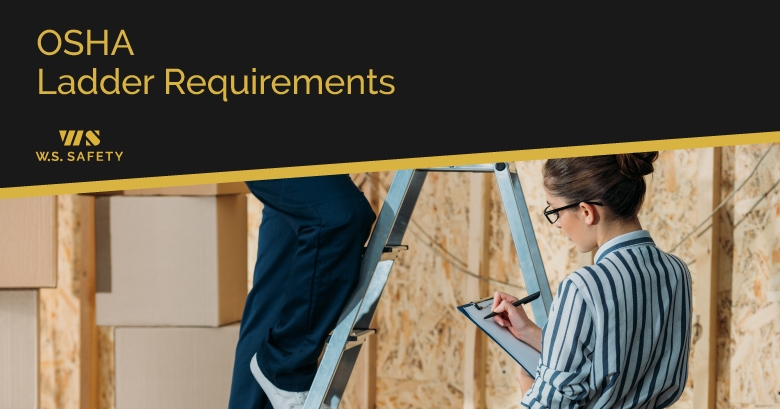OSHA’s Revised Walking Working Standards relate to fixed ladders that have been installed since November 18, 2018.
It’s estimated that the new OSHA fixed ladder requirements will affect approximately 112 million employees at an estimated 6.9 million workplaces.
According to data from the US Bureau of Labor Statistics, falling from heights continues to be one of the leading causes of injuries and deaths in the workplace.
OSHA has recorded over 200,000 serious injuries and approximately 345 fatalities every year, with falls from heights contributing to a large number of these.
OSHA has been continually gathering data and revising policies accordingly since the early 1970’s.
By implementing various changes to standards and policies, OSHA hopes to save employers hundreds of millions of dollars every year by preventing fatalities and lost workdays due to injuries related to fixed ladders.
Let’s take a look at the key changes, and how the new OSHA ladder requirements could affect you.
OSHA FIXED LADDER REQUIREMENTS 2019
GENERAL CHANGES
- Employers must ensure that any fixed ladder in use at the workplace can support the maximum intended load. The general specification for maximum load on all fixed ladders is between 200-250 pounds. This means that every single step or rung on the ladder can bear a concentrated load of up to 250 pounds.
- Employers must ensure that any grab bars do not extend beyond the rungs of the ladder. Protruding grab bars make it more difficult for a worker to climb and access the landing surface or platform.
- Employers must also ensure that the minimum size of the grab bars matches the size of the ladder rungs.
- Workers cannot use fixed ladders that are at an angle greater than 90 degrees. A pitch greater than 90 degrees makes it much more difficult for workers to climb a ladder safely.
- Hatch covers must have enough clearance to provide easy access to or from the ladder. Employers must ensure that the hatch covers open at an angle of at least 70 degrees.
KEY MEASUREMENTS TO REMEMBER
- Ladder rungs, steps, and cleats are required to have a minimum clear width of 16 inches. This must be measured before the ladder is installed.
- 7 inches is the minimum perpendicular distance from the centre line of the steps, rungs, or grab bars to the nearest permanent object. This 7-inch clearance protects workers from tripping because of lack of space.
- At the top of the ladder, there must be a grab bar extension measuring42 inches high above the landing surface.
- The extension above the landing surface or platform must be a minimum of 24 inches wide, with no more than 30 inches of clearance. This allows a worker to access the handrails without difficulty.
- For ladders that have been equipped with ladder safety systems, the clearance between the side rails of the ladder extensions must not be greater than 36 inches.
- For through ladders, the distance to step across to the nearest edge of the supporting building or structure must not be less than 7 inches and must not exceed 12 inches. This is measured from the centre line of the ladder. For sidestep ladders, this distance must be at least 15 inches and no greater than 20 inches.
OSHA LADDER LANDING PLATFORM REQUIREMENTS
All fixed ladders installed after November 18, 2018 that are over 24 feet are required to have ladder safety systems. This includes fall arrest systems. They are also required to have rest platforms every 150 feet or less.
Ladders installed before this date that have safety cages must have landing platforms at intervals of 50 feet or less. Landing platforms must provide workers with an unobstructed, horizontal surface that measures a minimum 24 inches by 30 inches.
Fixed ladders must extend at least three feet beyond the landing platform.
To prevent workers from falling into ladderway platform holes, employers must ensure that a guardrail system and toeboards are installed on every exposed side. At the entrance to the hole, it is also mandatory for a self-closing gate or offset to be installed.
OSHA FIXED LADDER FALL PROTECTION
One of the most publicized changes to OSHA’s policies is that ladders that measure 24 feet or higher can no longer use safety cages.
Instead, workers will have to use a ladder safety system or wear a personal fall arrest system. This change impacts all fixed ladders installed after November 19, 2018.
A ladder safety system consists of a carrier, safety sleeve, lanyard, and body harness.
The system must allow a worker to climb safely up and down without having to hold onto or tug any part of the system. Furthermore, the distance between the carrier and lifeline and wherever the system attaches to the body harness cannot be any greater than 9 inches.
Finally, all ladder safety systems must hold up under an 18 inch drop test using a 500 pound weight.
For ladders that were installed before this date, the changes do not need to be implemented until 2036 as the safety cage is phased out.
By this time, all existing fixed ladders will have to comply with the new regulations and be equipped with a ladder safety system or personal fall protection equipment. Any safety cages can remain as long as they don’t cause interference with the safety system.
Another important change in this regard is that workers using ladders that have been repaired or had parts replaced must use a ladder safety system or be equipped with a personal fall arrest system.
CONCLUSION
The new OSHA regulations are designed to help employers implement the latest technology in fall protection and workplace safety in order to better protect their workers – and save the multitude of expenses attached to workplace injuries and deaths.


